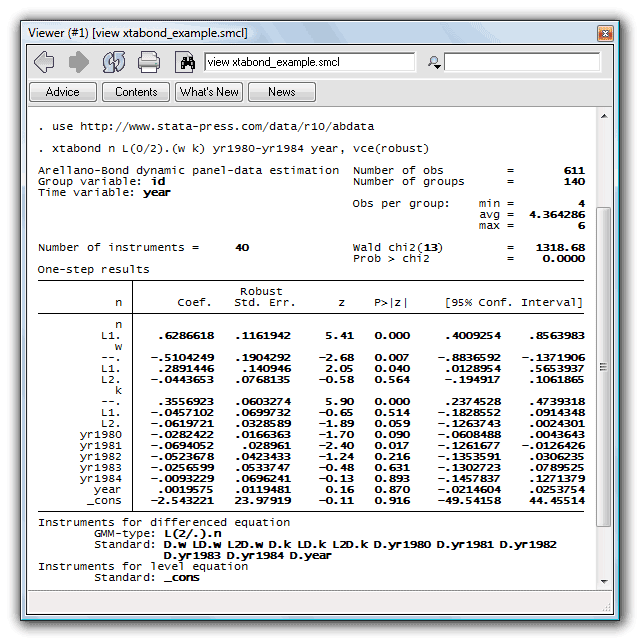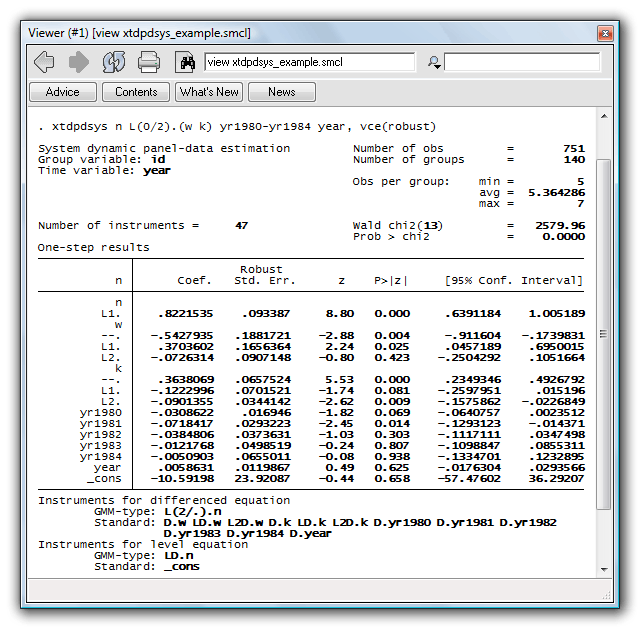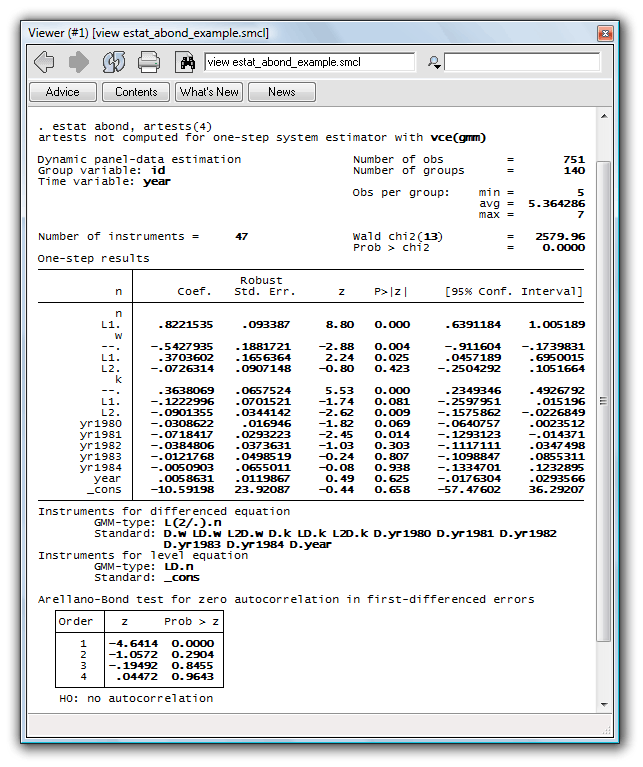
Dynamic panel-data (DPD) analysis was introduced in Stata 10.
|
| Order |
Stata 10 now has a suite of commands for dynamic panel-data analysis:
Building on the work of Layard and Nickell (1986), Arellano and Bond (1991) fit a dynamic model of labor demand to an unbalanced panel of firms located in the United Kingdom. First we model employment on wages, capital stock, industry output, year dummies, and a time trend, including one lag of employment and two lags of wages and capital stock. We will use the one-step Arellano–Bond estimator and request their robust VCE:
. use http://www.stata-press.com/data/r10/abdata, clear . xtabond n L(0/2).(w k) yr1980-yr1984 year, vce(robust)

Because we included one lag of n in our regression model, xtabond used lags 2 and back as instruments. Differences of the exogenous variables also serve as instruments.
Here we refit our model, using the xtdpdsys command instead so that we can obtain the Arellano–Bover/Blundell–Bond estimates:
. xtdpdsys n L(0/2).(w k) yr1980-yr1984 year, vce(robust)

Comparing the footers of the two commands’ output illustrates the key difference between the two estimators. xtdpdsys included the lagged differences of n as instruments in the level equation; xtabond did not.
The moment conditions of these GMM estimators are valid only if there is no serial correlation in the idiosyncratic errors. Because the first difference of white noise is necessarily autocorrelated, we need only concern ourselves with second and higher autocorrelation. We can use estat abond to test for autocorrelation:
. estat abond, artests(4)
